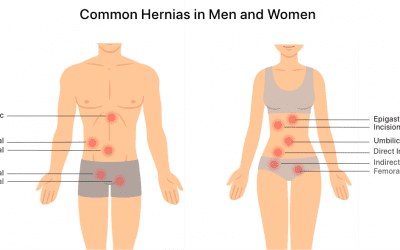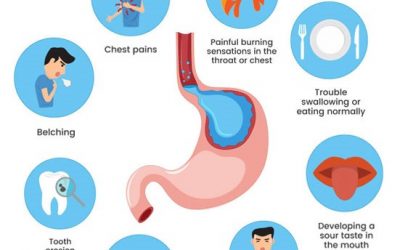VERTIGO

If you have vertigo, You may feel like your surroundings are in motion when they are not OR you may feel like you are moving or spinning when you are not. Many people describe vertigo as feeling dizzy, but it’s different from being light-headed. Simple movements are unusually intense for people with vertigo, and the condition can impact our everyday life.
TYPES OF VERTIGO:
- PERIPHERAL VERTIGO: Peripheral vertigo is caused by a problem in areas of the inner ear or the vestibular nerve, which connects the inner ear and the brain. This is the most common type of vertigo.
- CENTRAL VERTIGO: Central vertigo happens when there’s a glitch in the brain, particularly in area of the brain called the cerebellum.
SIGN AND SYMPTOMS OF VERTIGO:
Symptoms of vertigo vary from person to person. You symptoms might be might or severe, depending on what’s causing the issue. Some common signs and symptoms of peripheral vertigo include:
- Dizziness
- Feeling like you are moving or spinning
- Problem focusing the eyes
- Hearing loss in one ear
- Balance problems
- Ringing in the ears
- Sweating
- Nausea or vomiting
Central vertigo may cause signs and symptoms such as:
- Double vision
- Difficulty swallowing
- Facial paralysis
- Eye movement difficulties
- Slurred speech
- Weak limbs
WHAT DOES IT FEEL LIKE TO HAVE VERTIGO?
Many people describe vertigo as feeling like the room is spinning. It might cause you to feel like you are tilted, rocking, unbalanced, or unsteady. Sometimes these unpleasant sensations are worse if you are standing up, walking, or moving head around. Many people describe these feelings as physically exhausting and taxing. Sometimes, the sensations are so severe that you feel nauseated or experience vomiting. Usually symptoms of vertigo don’t include light-headedness, fainting, or motion sickness.
CAUSES AND RISK FACTOR OF VERTIGO:
Vertigo is not a disease itself. Instead, it’s a symptom of other conditions. Finding out what’s causing your symptoms is one of the first measures your doctor will take in assessing how to cure vertigo. You’ll need to know what’s triggering your dizziness before you can treat it. Identifying specific risk factors and medical conditions can be helpful. An array of issues can cause vertigo. Some of the most common are conditions known as benign paroxysmal positional vertigo (BPPV). Meniere ’s disease and labyrinthitis. Less Common causes include migraines, medication, head injuries, and stroke. Being a woman and being older than 50 can up your risk of having a vertigo episode.
A family member with vertigo, or other factors, such as having a head injury, can also increase your chances of developing symptoms.
VERTIGO: PROBLEMS WITH THE INNER EAR:
Symptoms of vertigo are often the result of an inner ear (Vestibular system) problem. Your inner ear plays a big role in helping you feel balanced. Inside your ear is a tiny organ called the vestibular labyrinth, which includes semicircular canals that contain fluid and hair-like sensors. Other structures in the ear, called otolith organs, help monitor the movement and position of your head in relation to gravity. Otolith organs contain small crystals that make you responsive to gravity. Sometimes, these crystals can break free and move into the semicircular canals. This can irritate the hair cells within the canals and make them more sensitive to head position changes. It can allow for false messages about your body’s position to be sent to your brain.
Basically, Inner ear disorders cause your brain to obtain signals from the inner ear that don’t match up with your eyes and sensory nerves (Nerves that send messages to your brain) receive.
HOW IS VERTIGO DIAGNOSED?
Diagnosing vertigo isn’t always simple. In fact, it can be a tricky and involved process, because people with dizziness often have trouble describing their specific symptoms.
First, your doctor will try to find out if you have “true vertigo” by asking about your specific complaints. Then, the focus will be on diagnosing a cause. Your physician might inquire about your family and medical history, perform a physical exam, and conduct various tests. They may perform a maneuver with your, called the Dix Hallpike maneuver, to re-create vertigo symptoms. If positive, this is diagnostic of peripheral vertigo. Other physical examinations measure your balance, analyze your eye movements, or assess what side of your body is affected by vertigo. Imaging tests, such as computerized tomography (CT) scan or MRI, can be used to let doctors see what’s going on inside your body. In some cases, hearing tests, vision tests, blood work, and even allergy tests are also used. Each person may require different testing, depending on the suspected cause of vertigo.
WHEN SHOULD YOU CALL YOUR DOCTOR ABOUT YOUR SYMPTOMS?
You should see a doctor if you have vertigo symptoms that come back periodically for more than one week. It is also a good idea to see your healthcare provider if you have any type of dizziness that interferes with your daily activities.
WHEN SHOULD YOU SEEK OUT EMERGECY CARE?
Symptoms of vertigo are rarely caused by a serious, life-threatening condition. But you should visit your doctor immediately or seek emergency medical care if you experience dizziness along with the following:
- A new, different, or severe headache
- Hearing loss
- Double vision or loss of vision
- Fever
- Slurred speech or trouble speaking
- Limb weakness
- Loss of consciousness
- Numbness or tingling
- Difficulty walking loss of coordination
- Inability to keep food down, or continuous vomiting.
PROGNOSIS OF VERTIGO:
In many cases, symptoms of vertigo will resolve on their own within a few days. But for other people, it’s chronic. Living with vertigo can be frustrating. Your episodes may be unpredictable and sporadic. Some days, you may not experience any symptoms, while other days, you might have debilitating bouts of dizziness. The good news is there are dffective treatment options and most of the time, these treatments can help you control or eliminate your symptoms, so you can enjoy everyday activities.
DURATION OF VERTIGO:
Symptoms can last a few minutes, or they can persist for hours. In some people the vertigo persists for weeks or months.
TREATMENT AND MEDICATION OPTIONS FOR VERTIGO:
Several treatment options are available to help symptoms of vertigo. The Canalith Repositioning Procedure (Also known as the Epley Maneuver), a popular therapy that involves exercises to reposition canaliths in your inner ear, has a success rate of about 80%, in helping people with the most common cause of vertigo.
PREVENTIONOF VERTIGO:
Most of the time, vertigo can’t be prevented. But knowing and avoiding certain risk factors may help prevent it. For instance, you can protect yourself from a head injury by wearing a helmet when bicycling or playing sports or taking measures to prevent a fall.
ALTERNATIVE AND COMPLEMENTARY THERAPIES:
Many people also report that changing their diet and eliminating foods that are salty, sugary or high in caffeine can improve their symptoms. Good hydration is another way to help combat vertigo. Diaary supplements, such as ginkgo biloba extract, have also been shown to improve symptoms. Additionally, yoga, tai chi, relaxation techniques, and adequate sleep might help you improve balance and ward off a vertigo episode. Talk to your doctor before performing any at-home remedies.
COMPLICATIONS OF VERTIGO:
Vertigo can take a toll on your daily life. If your episodes are frequent or severe, you may not be able to work, drive, or perform other tasks. Typically, people with persistent vertigo are advised not to drive or operate machinery because these activities can pose dangers to themselves and others. Vertigo can also lead to falls, which may cause injuries. Falling is particularly a concern for older people, who are more prone to bone fractures and other complications.
PREVENTION OF VERTIGO:
Most of the time, vertigo can’t be prevented. But knowing and avoiding certain risk factors may help prevent it. For instance, you can protect yourself from a head injury by wearing a helmet when bicycling or playing sports or taking measures to prevent a fall.
Departments
- Department Of Cardiology
- Neurology
- Nephrology
- Urology
- Spine Surgery
- Orthopaedics/ Trauma
- General Medicine
- General and Laparoscopic Surgery
- Gastrointestinal Surgery
- Bariatric And Diabetes Surgery
- Intensive Care/ Critical Care
- Pulmonology
- Obstetrics and Gynecology
- Oral and maxillofacial surgery
- Dental and Implant surgery
- Neuro Surgery
- Radiology
- Physiotherapy






